S ELECTIVE
 M UTISM
M UTISM
A N A SSESSMENT AND I NTERVENTION G UIDE
FOR T HERAPISTS , E DUCATORS & P ARENTS
B Y A IMEE K OTRBA, P HD
Copyright 2015 by Aimee Kotrba, PhD
Published by
PESI Publishing & Media
PESI, Inc
3839 White Ave
Eau Claire, WI 54703
Cover Design: Amy Rubenzer
Layout: Bookmasters
Editing: Marrietta Whittelsey
Printed in the United States of America
ISBN: 978-1-55957-006-0
All rights reserved.

T ABLE OF C ONTENTS
A CKNOWLEDGEMENTS
I have decided that only crazy people write books while working, owning a business, and raising a family. And only crazier people support them in that pursuit. To my husband, Jeffyou are the craziest. Thank you so much for your support, your love, and your encouragement through this writing process. Thank you to my kids; they are too young to know what Mommy is doing when madly typing on her computer, but they give me laughter and happiness that energizes me to keep trying when I feel like giving up. None of this would be possible without my parents; you always told me that I was capable of doing anything, and although you arent really right (have you seen my golf game?) you made me believe in myself. I love you both. A big thank-you to Michael Rustman, Ed.D., Connie Kotrba, and Lisa Kovac, Ed.S., BCBA for editing, cleaning, and generally making this book sound better than it otherwise would have. I want to express my gratitude to the board members of the Selective Mutism Group, past and present. I am inspired by your commitment to children with selective mutism and their families. Finally, a thank you to those who work with me at Thriving Minds Behavioral HealthMarla Fields, Sheri Mehlhorn, and Katelyn Reed, M.S.for your support and for sharing in my excitement. I have been blessed to work with you.
I NTRODUCTION
When my publisher asked that I write an introduction explaining why I wrote a book on selective mutism, my first reaction was to pen a few paragraphs that could basically be boiled down to, I am writing in order to help people (such a psychologist answer). However, when I really thought about why I decided to write a book about selective mutism, I realized that it was out of pure frustration. Frustration at the lack of research-based information on selective mutism that is available to professionals and parents. Frustration about the myths that still exist in the general public concerning selective mutism. Frustration when other psychologists tell families that selective mutism cant be treated. Frustration when people unknowingly use terms like Jake refused to talk to me, as if the child is making a malicious decision not to speak. Frustration that we havent adequately spread the word about selective mutism.
I wrote this book out of that frustration, to assure you that selective mutism is treatable, as well as to provide a toolkit in your work. This book is for schools, professionals, and parents who are looking for realistic and helpful strategies that can be implemented in the school, clinicians office, and public to increase speech and decrease anxiety. Children with selective mutism can be effectively treated, and this book will give you step-by-step, clear, understandable instructions on how to help. I am regularly contacted by therapists and parents who exclaim with great surprise (and pleasure) that after implementing these strategies, their child made abundant strides in both confidence and verbalizations. I want to impart that same hope to you.
I also want to impart a good work ethicthis will not be easy. Mark Twain once said, Habit is habit, and not to be flung out of the window by any man, but coaxed down-stairs one step at a time. Children with selective mutism stopped speaking due to extreme anxiety, but the lack of speech quickly becomes a habit, and this habit can take timeand a lot of hard workto change. But have no doubtthe outcome will be worth it. Being able to speak to peers, participate in class, and interact with people in public restores a childs confidence and broadens his or her future prospects. By working through this book diligently and with patience, you can help a child thrive.

CHAPTER 1
M ORE T HAN J UST S HY ?
Jamie sits quietly on her own, while the other students laugh and talk around her. When Jamie is asked a question, peers say dismissively, she doesnt talk. The teacher, sensing her discomfort, skips her during circle time. Her parents stop trying to put her in extracurricular activities when it becomes clear she is distressed.
Sam squirms in his chair, panic building in his seven year old body. He is unable to tell his teacher either verbally or nonverbally that he has to use the bathroom. Suddenly, children start staring as Sam has an accident in his seat.
Ashleys anxiety fills her with dread when she enters the music room. Unable to utter a sound, she withdraws and stares. Her teacher, convinced that Ashley is not trying, gives her a zero. She fails the course.
While playing on the playground, Morgan falls off the monkey bars and breaks her wrist. She is terrified and in pain, but cannot tell anyone she is hurt until the end of the dayfive long, painful hours later when she returns home.
These upsetting stories are just a sampling of what children with selective mutism can experience. Children with selective mutism often have difficulty completing normal childhood tasks: telling a teacher about an injury, relating socially to other children, making a request to use the bathroom, asking a question in class, or participating in a group project. Their plight too often goes unaddressed and untreated, because the disability is not well known or understood. Parents and school personnel may know that these behaviors have moved outside the realm of normal behavior and that intervention is necessary, but often do not know what steps to take.
What can parents do to help their child feel more confident? If the child does not speak, how can the school assess the childs knowledge? How does the school identify a plan of action? How do parents advocate for their child when they do not understand what is wrong? There are many questions and far too few answers.
Research has demonstrated repeatedly that early intervention is imperative in successfully treating selective mutism (Bergman, 2013). Early intervention helps avoid issues that arise from a continued lack of communication, participation, and socialization. Each day that the child avoids talking deepens his or her struggles, which can lead to increased anxiety, decreased self-esteem, and more difficulty in changing the behavior pattern. For the childs sake, parents and professionals must intervene early and effectively.
These stories can be frightening and upsetting, especially for parents or caregivers of children with selective mutism. The good news is this: with the right treatment, these scenarios can be avoided. Selective mutism is treatable, and children treated with effective interventions tend to have wonderful outcomes. Children with selective mutism can learn to be brave, advocate for their needs, ask questions, respond to peers and adults, and speak with confidence. Nothing feels better than observing a child who never spoke in class raise their hand to proudly answer a question or perform in the school musical. I have sat with parents, grandparents, and teachers as they cried tears of joy watching a child with selective mutism succeed. This book will provide research-based, concrete techniques to help children slowly face and overcome their fears, increase confidence, and increase speech. Implementing the ideas found in this book will make a difference in the life of a child with selective mutism.
Next page
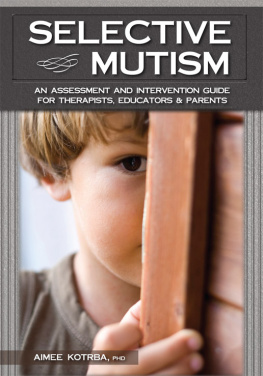

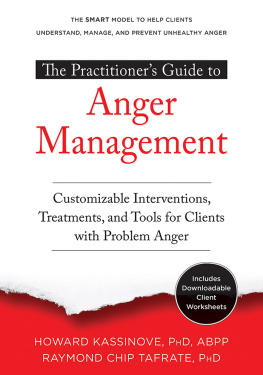
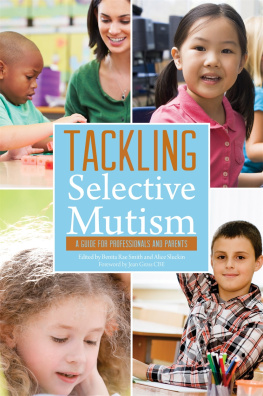
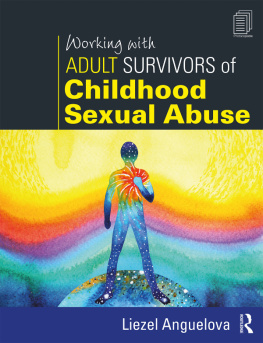
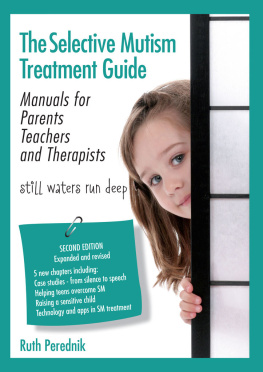
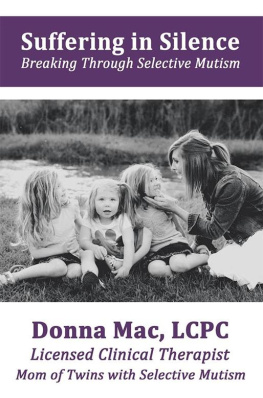
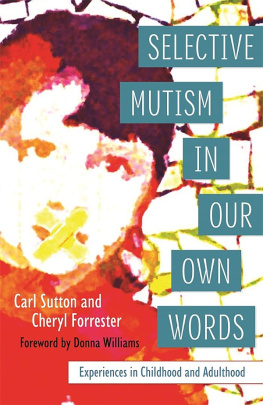
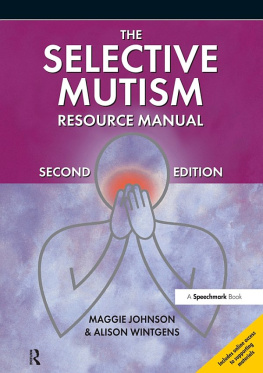
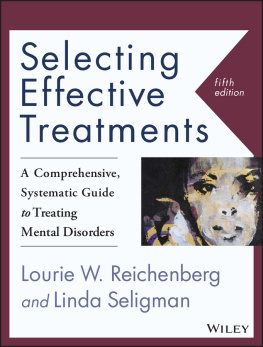
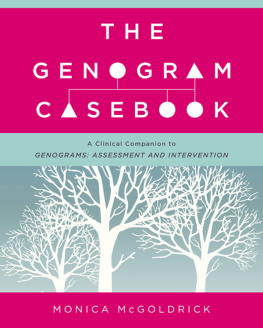
 M UTISM
M UTISM